iShares US Home Construction
Latest iShares US Home Construction News and Updates
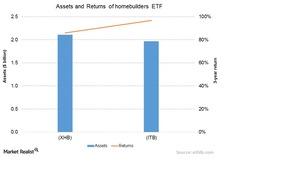
Why you should invest in homebuilder ETFs like XHB and ITB
ETFs present another investment avenue. Apart from pure homebuilder ETFs, there are many other ETFs that offer exposure to homebuilders.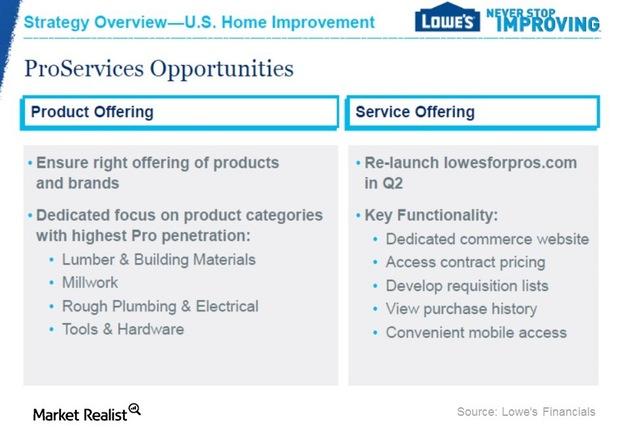
Why Lowe’s Is Trying Hard to Woo Professional Customers
A professional customer is one who’s looking for products to complete projects for other customers.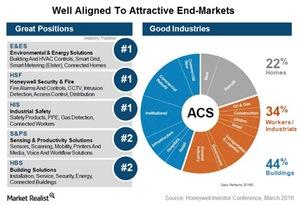
A Brief Overview of Honeywell Automation and Control Solutions
Honeywell (HON) provides control solutions for various residential and industrial applications through the Honeywell Automation and Control Solutions–ACS unit.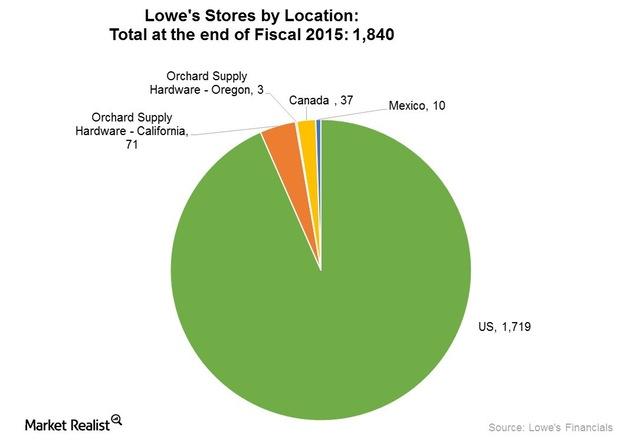
Why Lowe’s Bought Orchard Supply and Is Eyeing Smaller Stores
Lowe’s is also experimenting with the idea of rolling out other smaller format stores like City Center stores in other under-penetrated and high-density urban areas in the US.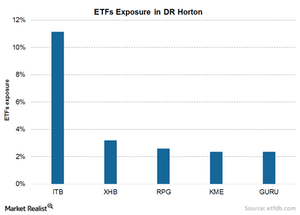
How to Invest in D.R. Horton through ETFs
D.R. Horton sees allocation in major homebuilding sector-specific ETFs like the iShares Dow Jones US Home Construction Index Fund (ITB).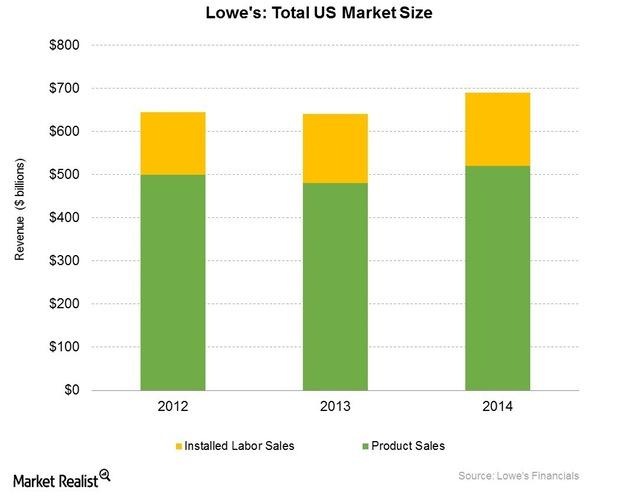
Why Home Depot and Lowe’s Are Leaders in Home Improvement Retail
Lowe’s (LOW) operates in the home improvement retail industry. The company competes with a number of retail and wholesale players.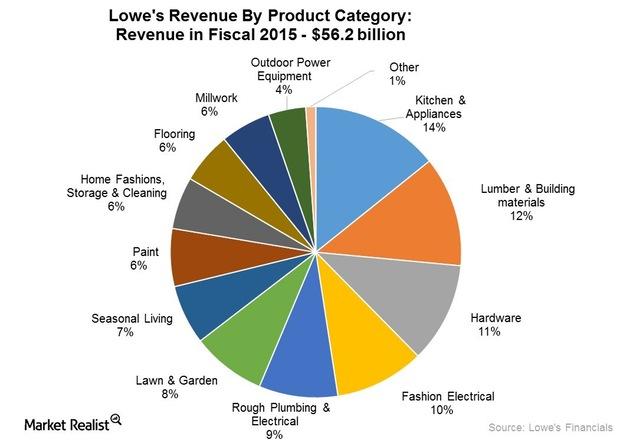
Analyzing Lowe’s Merchandise and Services Assortment
Lowe’s sources its merchandise from over 7,000 suppliers with no supplier accounting for more than 6% of sales.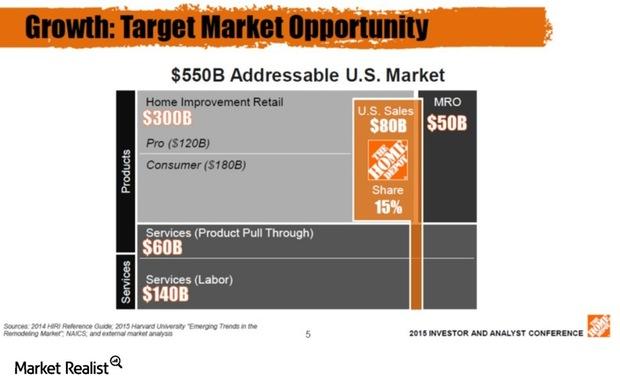
How Home Depot Is Leveraging the Pro Customer Opportunity
Driving growth from sales to pro customers is a key growth opportunity for the world’s largest home improvement retailer.
How Home Depot Drives Membership Loyalty With Pro Customers
The Home Depot’s (HD) focus on the pro customer allows the retailer to compete in the installations market and the product demand the services create.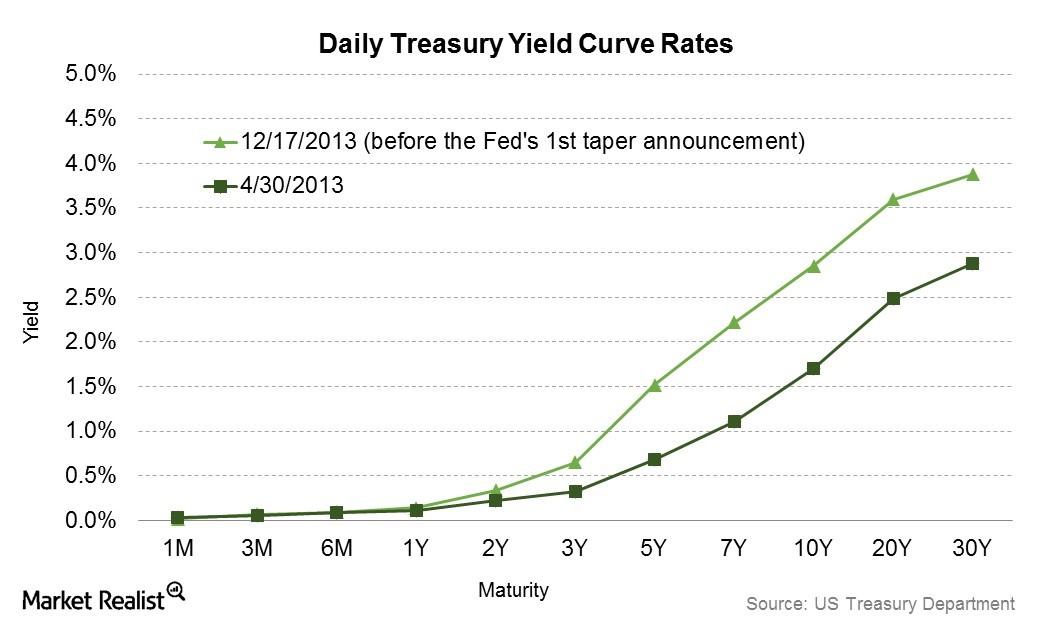
How do interest rate expectations impact financial markets?
The inflation and interest rate expectations of consumers and firms are important variables determining bond prices.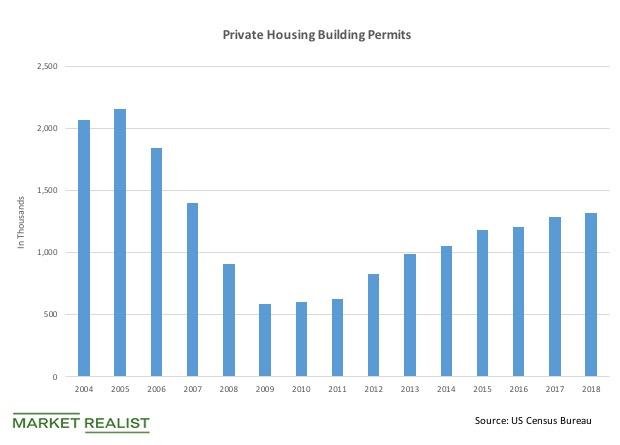
How Building Permits and the Housing Market Can Predict Trends
When real estate developers or REITs like AvalonBay (AVB) are confident about the economy, they build more in anticipation of future demand from consumers.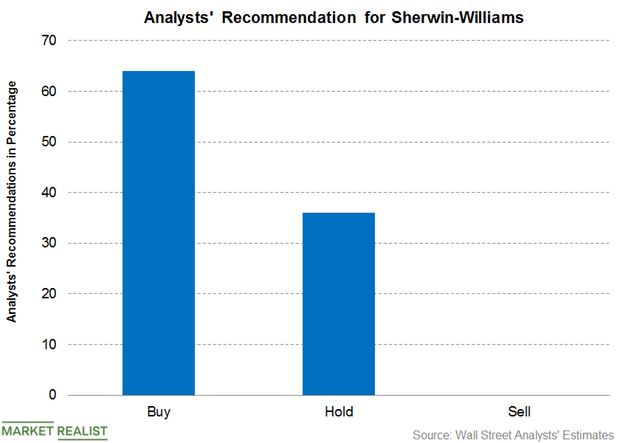
Sherwin-Williams: Analysts’ Recommendations
For Sherwin-Williams, 64% of the analysts recommended a “buy,” 36% recommended a “hold,” and none of the analysts recommended a “sell.”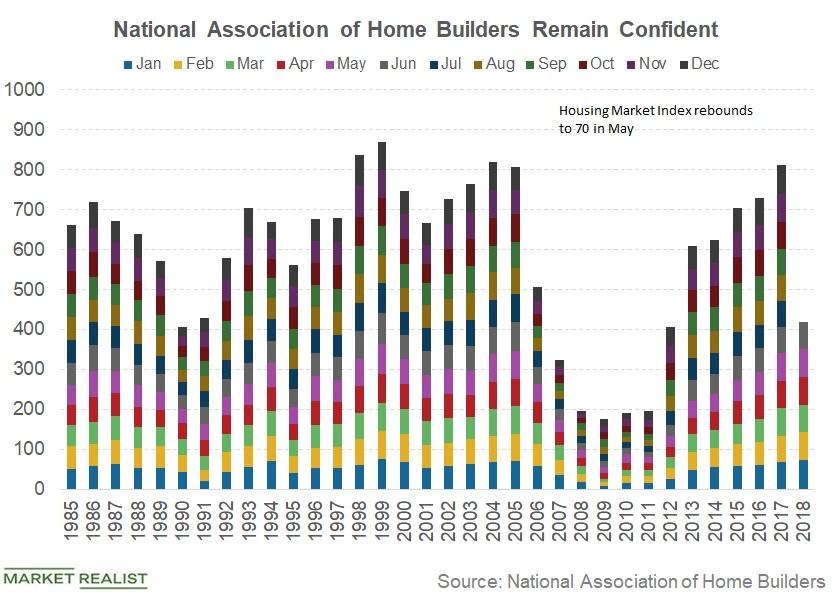
What American Builders Were Worried about in June
The HMI was reported to have decreased by two points to 68 in June as compared to a May reading of 70.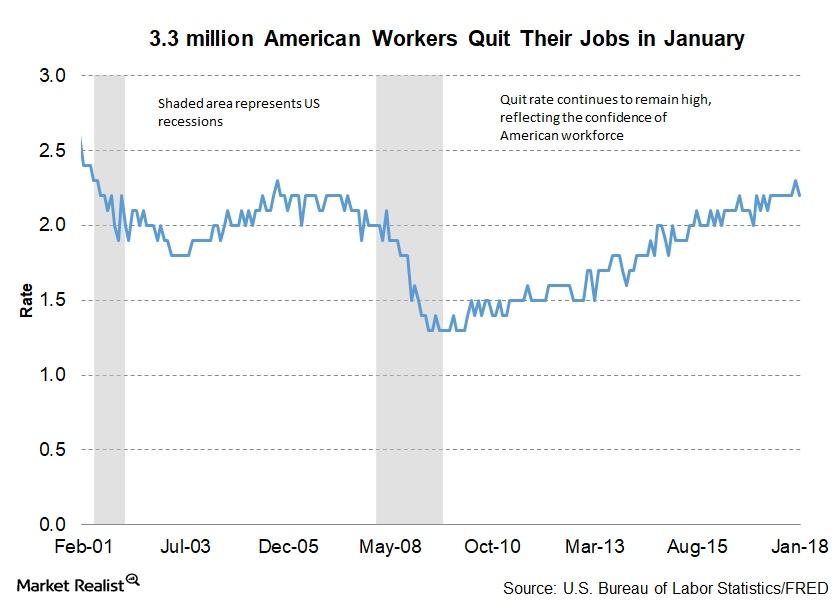
Why the US Workforce’s Quit Rate Has Remained High
January’s JOLTS (Job Openings and Labor Turnover Survey) data, which contains information about job openings and total separations, was reported on March 16.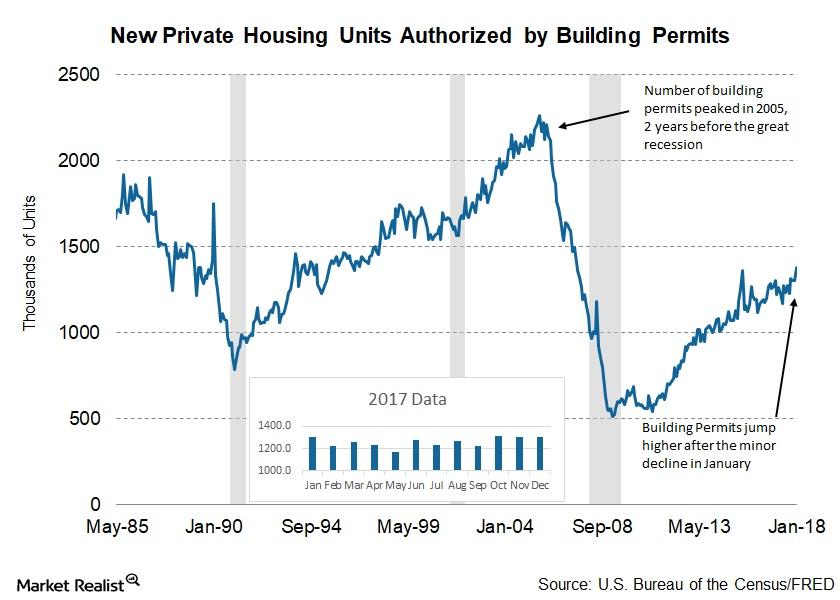
Why the Rebound in Building Permits Is Positive for the US Economy
The Conference Board uses the number of building permits issued as one of the key constituents of its LEI (Leading Economic Index) model.
Why Building Permits Didn’t Change in December
For 2017, 1,263,400 housing units have been authorized by building permits—a 4.7% increase from 1,206,600 housing units in 2016.
How Confident Are Homebuilders at the Beginning of 2018?
Comments from NAHB members indicated that homebuilders are optimistic about the future demand and projected increased activity in the housing sector.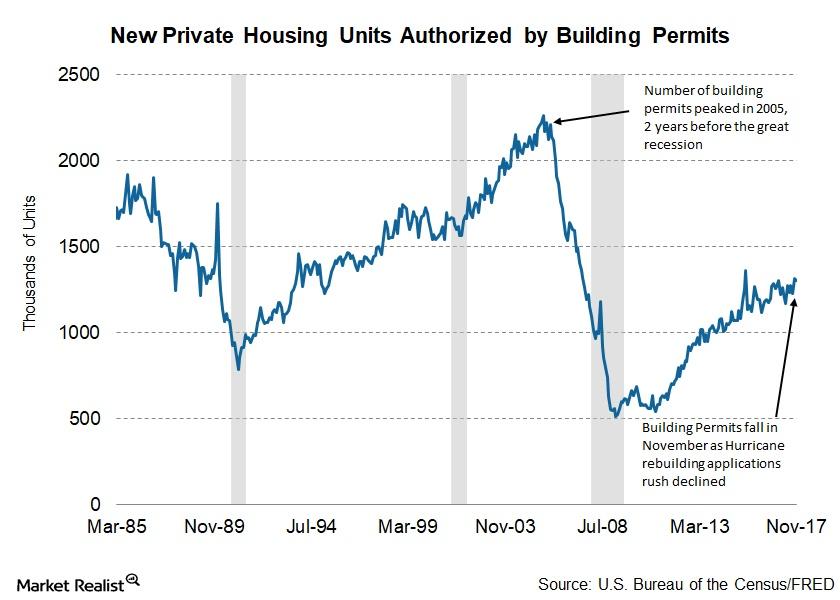
Building Permits Fall in November: Should We Worry?
Building permits and the economy The number of building permits issued each month is a constituent of the Conference Board LEI (Leading Economic Index). The construction and housing industry (PKB) is a major job provider in the economy, and changes in activity in the sector affect employment conditions and aggregate demand. A higher number of building permits is a leading […]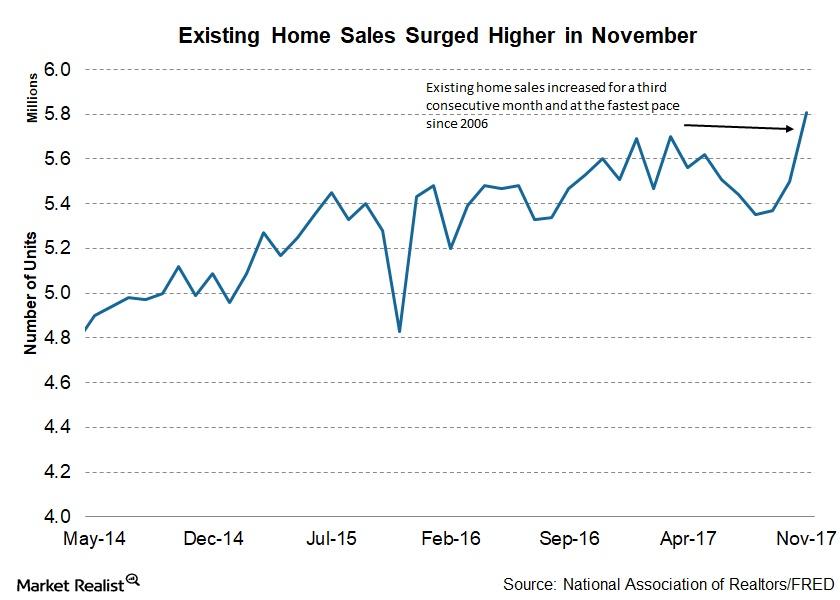
Existing Home Sales: Strongest Pace in 11 Years
According to the latest report from NAR, existing home sales rose 5.6% to a seasonally adjusted annual rate of 5.81 million homes in November.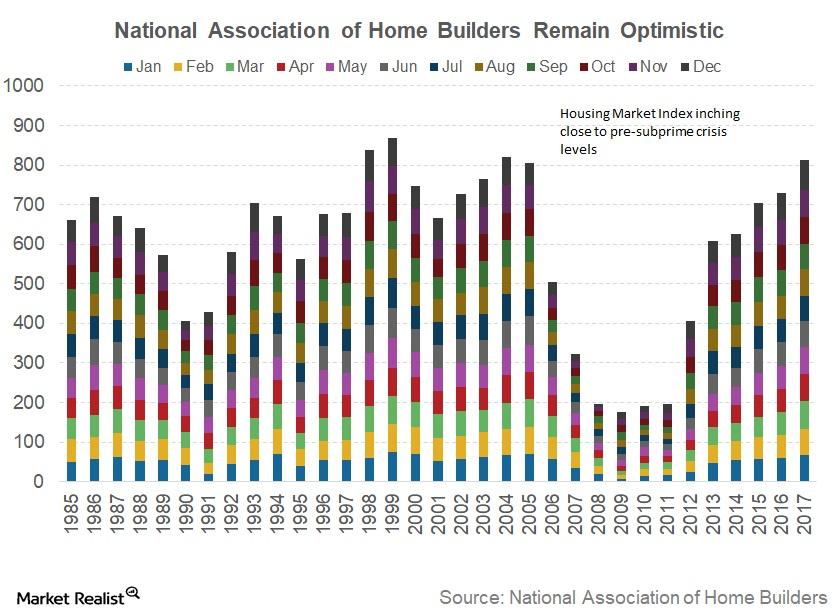
Housing Market: Builders’ Confidence Reaches an 18-Year High
For November, the NAHB Housing Market Index was reported as 74—an increase of five from October and an 18-year high.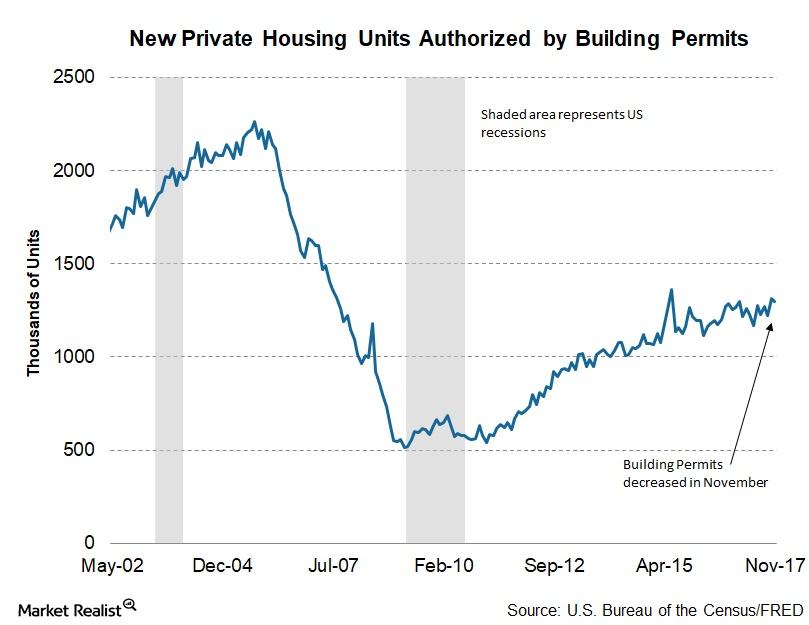
Should Investors Be Concerned about Fewer Building Permits?
In November 2017, housing units (XHB) authorized by building permits were at a seasonally adjusted rate of 1.298 million—a decrease of 1.4% from October.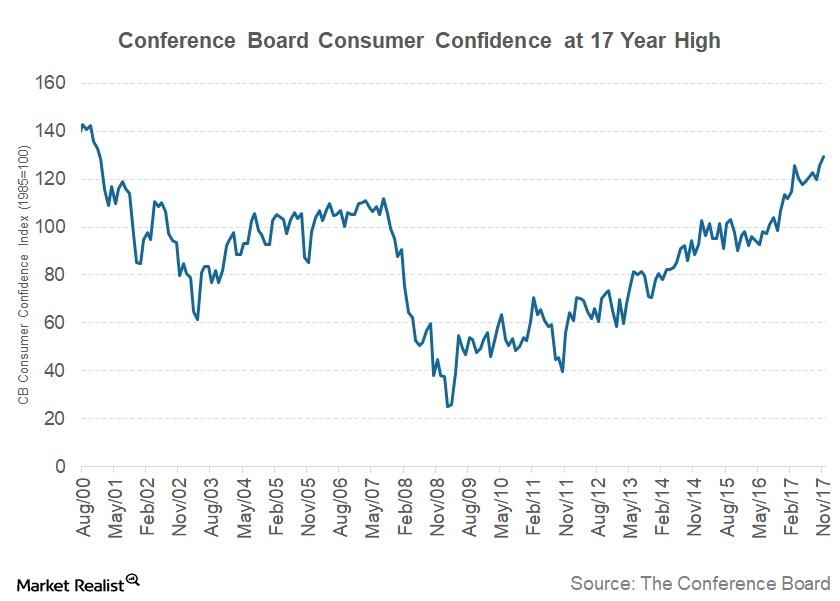
Conference Board Consumer Confidence Rose in November
The Conference Board Consumer Confidence Index for November came in at 129.5, up from 126.2 in October.
Households Think It’s a Good Time to Buy a Home
According to the latest report from NAR, existing home sales have risen 2% to a seasonally adjusted annual rate of 5.48 million in October.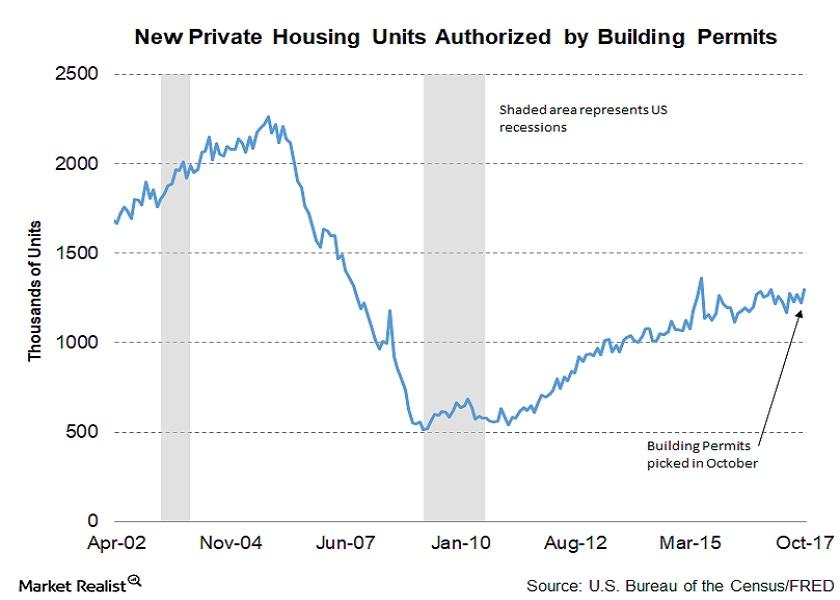
Housing Market: What a Rise in Building Permits Signals
In October 2017, building permits were at a seasonally adjusted rate of 1.297 million—an increase of 5.9% from the reading of 1.225 million in September.
Here’s What Drove Consumer Expectations Lower in November
The University of Michigan Preliminary Consumer Sentiment for November was reported at 97.8, which was 2.9 lower than the final October reading of 100.7.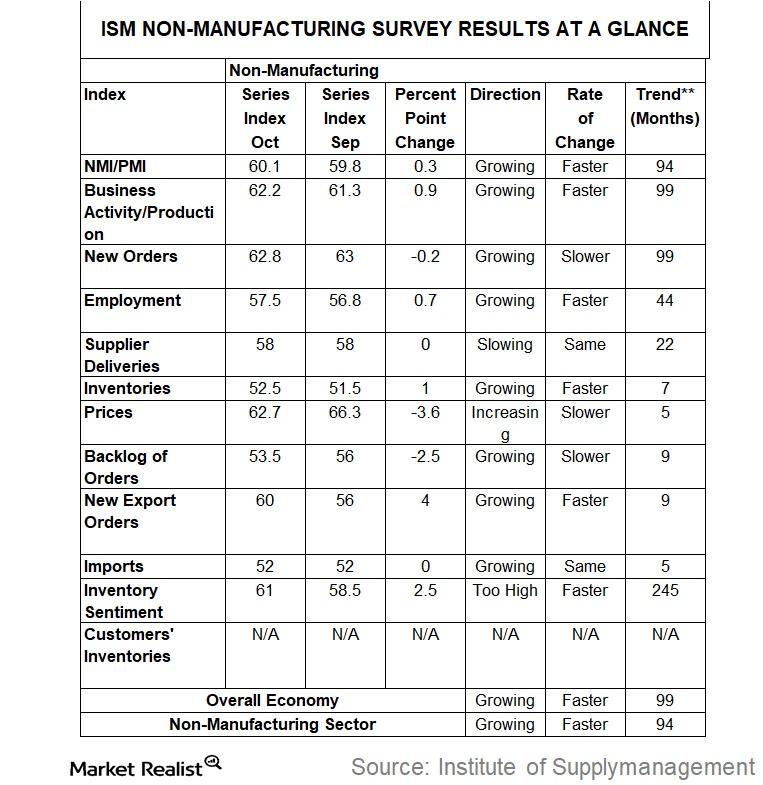
This ISM Index Hit a Lifetime High in October
For October, service sector activity rose at a pace not seen since the inception of the report. The non-manufacturing index reached a lifetime high of 60.1.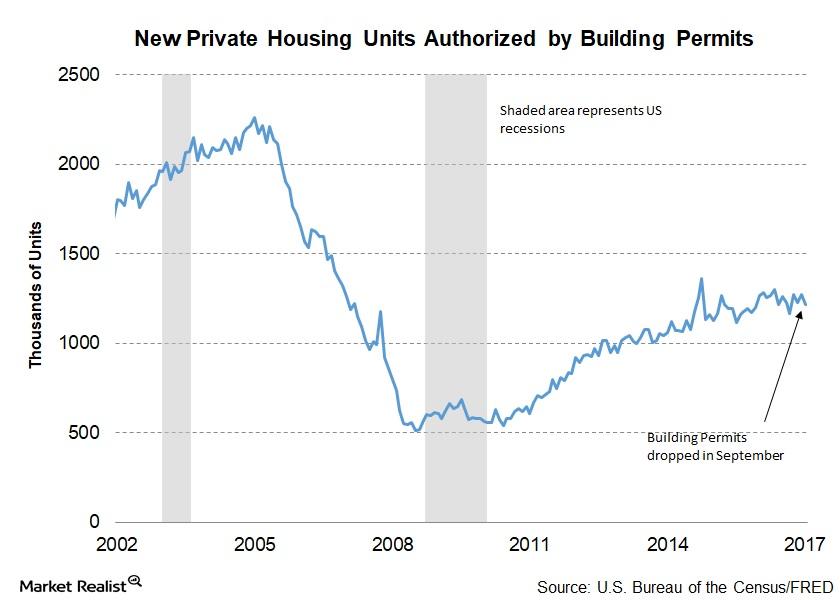
Is the Drop in September Building Permits Cause for Concern?
In September 2017, building permits were at a seasonally adjusted annual rate of 1.215 million—a fall from August’s 1.272 million and 4.3% below September 2016.
Which Job Sectors Saw the Most Impact from Hurricanes Last Month?
As per the September ADP Employment Report, there was a major drop in the number of jobs created in the trade, transport, and utility sector.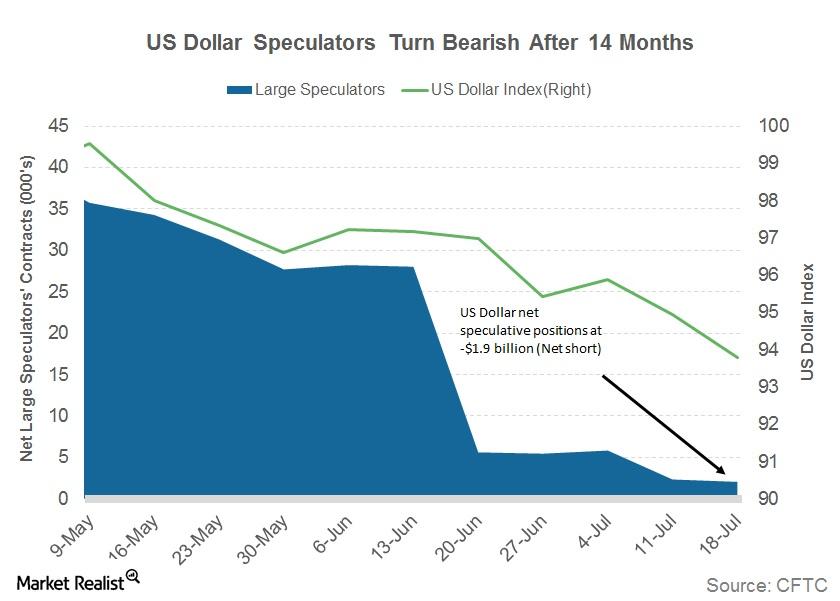
This Is Why the US Dollar Could Slide Further
US Dollar index reaches a 14-month low The US Dollar Index (UUP) continued with its fall as investors preferred major peers. In the week ended July 21, the US Dollar Index closed at 93.78, falling 1.7% from the week prior. It is headed for its fifth consecutive month of loss this year. Conflicting news from […]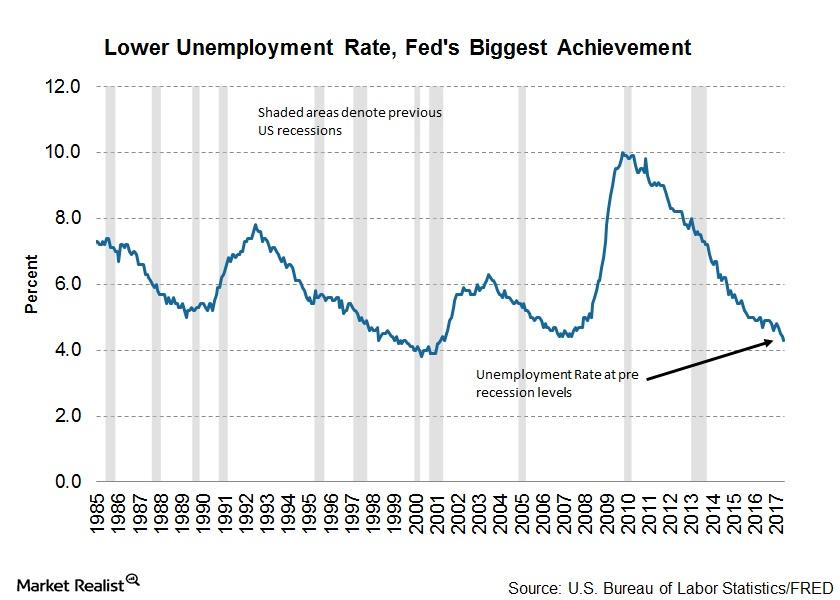
Why the Fed Isn’t Satisfied with Labor Market Conditions
Despite the strong growth in employment numbers, the Fed’s latest monetary policy report had some comments about slow wage growth.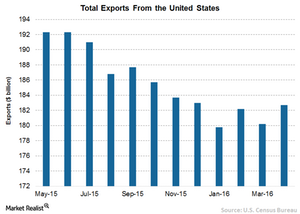
How to Navigate Uneven Economic Growth
A number of factors have contributed to the slowdown, including soft overseas growth and a sharp drop in capital spending by energy and mining companies.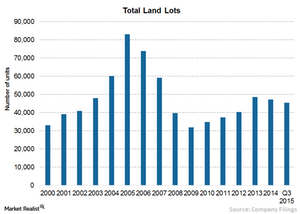
Understanding Toll Brothers’ Land Acquisition Strategy
Toll Brothers’ use of land option agreements reduces financial risks associated with long-term land holdings. The land acquisition strategy of other homebuilders also involves option contracts.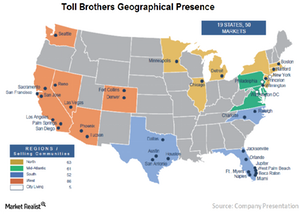
A Geographic Overview of Toll Brothers’ Homebuilding Operation
Toll Brothers (TOL) has a very geographically diverse homebuilding operation in the United States. The company has a presence in 50 markets, spanning 19 states as well as the District of Columbia.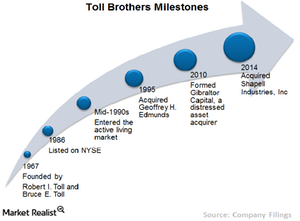
Investing in Toll Brothers: A Must-Know Company Overview
Toll Brothers is primarily engaged in the development of attached and detached homes in luxury residential communities. It’s a dominant player in the luxury segment with very few comparable competitors.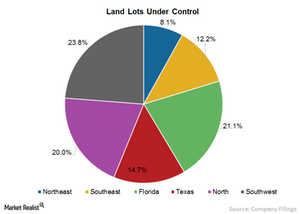
Understanding PulteGroup’s Land Acquisition Strategy
PulteGroup (PHM) mainly acquires land to complete sales of housing units within 24 to 36 months from the date of opening a community.
What Is PulteGroup’s Market Segmentation Strategy?
The move-up buyers in Pulte Homes communities tend to place more premium on location and amenities.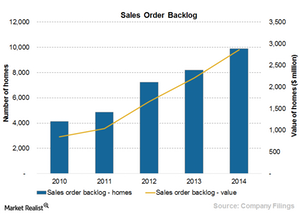
D.R. Horton’s Huge Sales Order Backlog Ensures Sustainable Growth
Pretty much all of the homes in D.R. Horton’s sales order backlog at the end of fiscal 2014 are likely to close in fiscal 2015, which will boost the company’s revenues.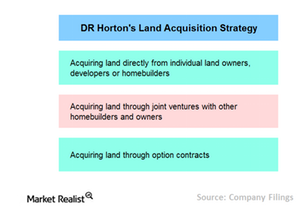
Understanding D.R. Horton’s Land Acquisition Strategy
D.R. Horton directly acquires almost all of its land and lot positions. The company has initiated few joint ventures for land acquisitions.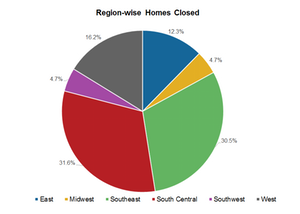
An Overview of D.R. Horton’s Homebuilding Segment
The homebuilding segment of D.R. Horton, which mainly focuses on single-family attached and detached homes, is divided into six divisions.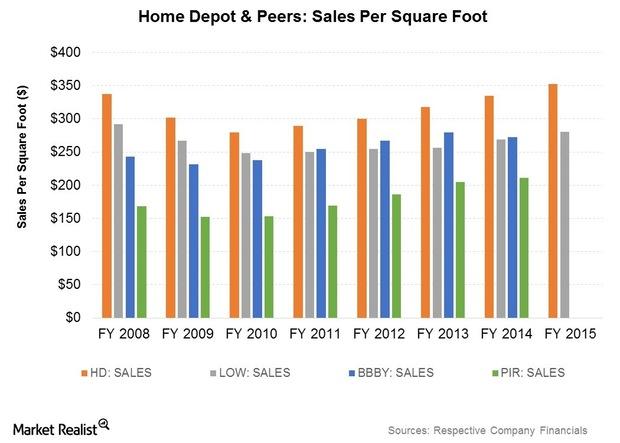
Home Depot Profits from Sound Supply Chain Management
Home Depot’s (HD) supply chain is getting more productive, resulting in better gross margins. Each store stocks about 30,000 to 40,000 different products.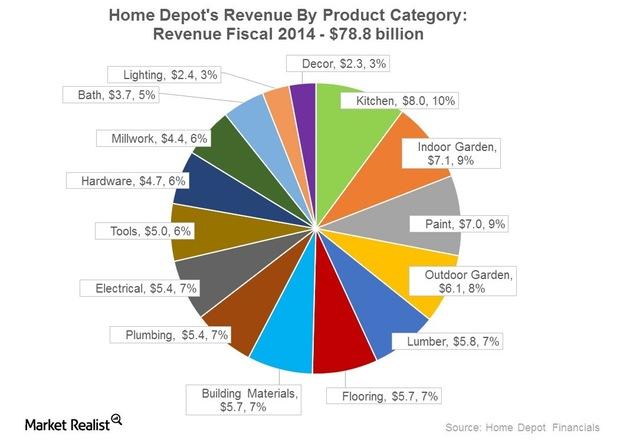
Home Depot’s Product Portfolio and Supplier Relationships
Kitchen and garden products are the best-grossing product categories. These accounted for nearly 27% of revenues in fiscal 2014.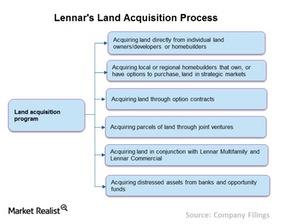
Lennar’s Diversified Land Acquisition Process
Lennar’s land acquisition process includes acquiring land from individual land owners, developers, or homebuilders. Lennar also creates JVs to acquire land.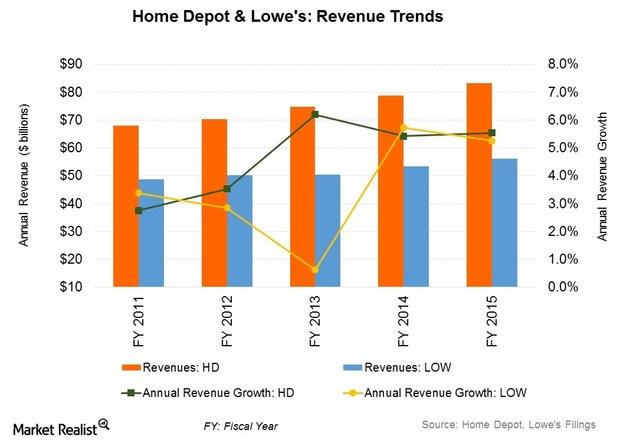
Home Improvement Retail: A Two-Horse Race for Supremacy
The home improvement industry is highly concentrated, particularly in the consumer market. The degree of concentration is growing.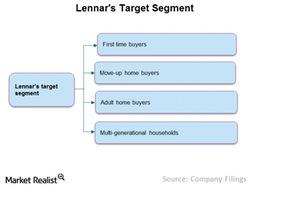
Market Segmentation in Lennar Corporation
Lennar’s market segmentation is primarily first-time, move-up, and active adult homebuyers in areas ranging from urban infill to golf course communities.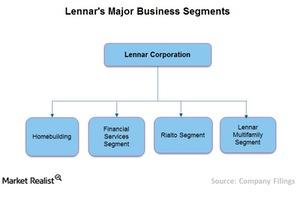
Lennar’s Four Main Business Segments
Lennar’s (LEN) four main business segments include Homebuilding, Lennar Financial Services, Rialto, and Lennar Multifamily.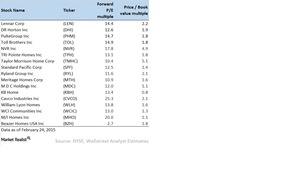
Valuing homebuilders: Buying at the right price
Homebuilders earn substantial profits buying land at a cheaper rate, allowing it to appreciate over time, constructing a house on it, and selling it.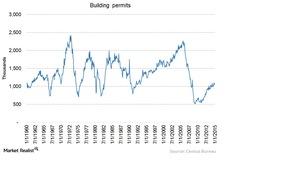
Understanding building permits and their impact on homebuilders
Along with housing starts, building permits are also a leading indicator of the health of the US housing market.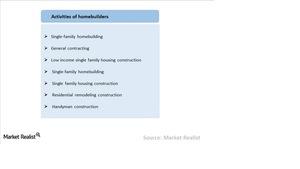
The basics of the US homebuilding industry for investors
The US homebuilding industry comprises many large, publicly traded residential construction companies. Top homebuilders mainly focus on specific categories.
